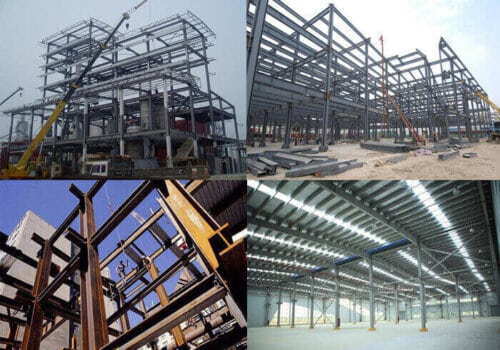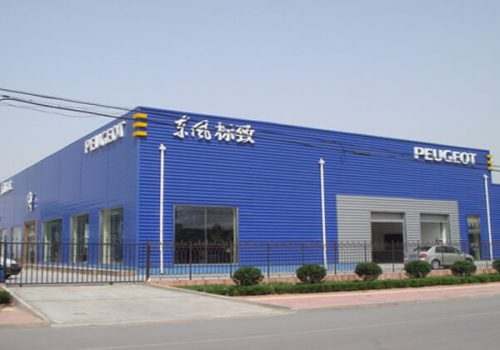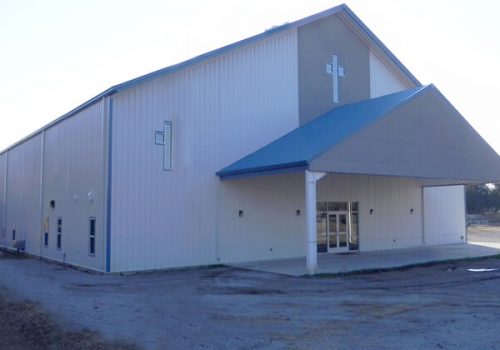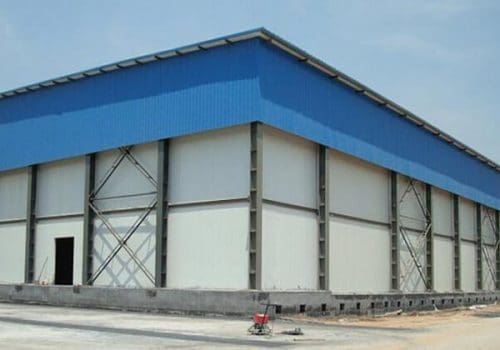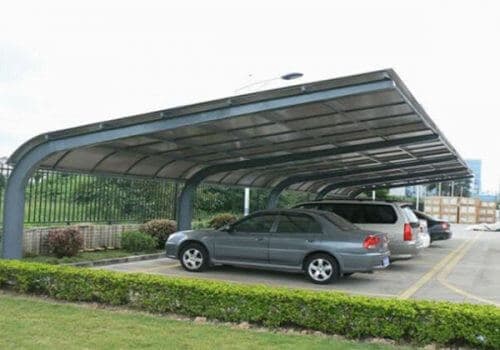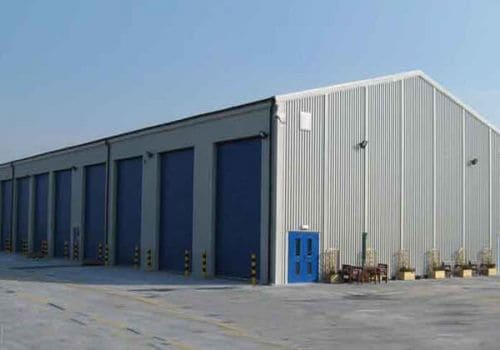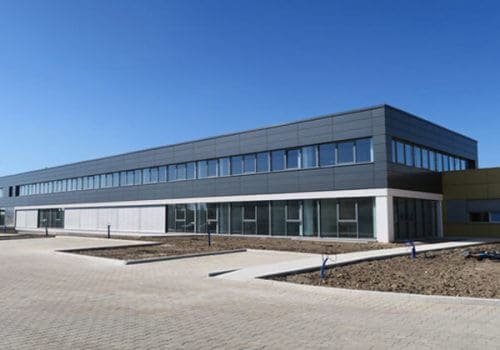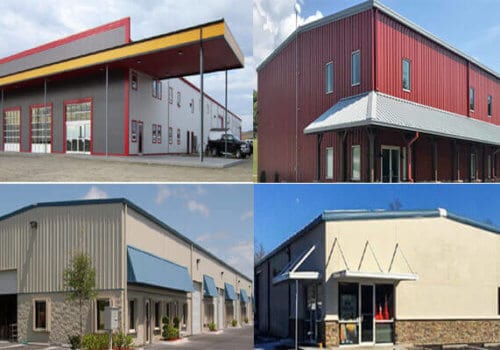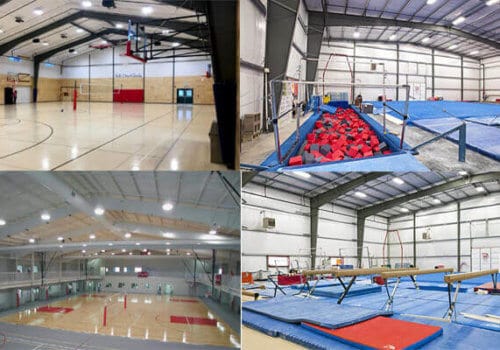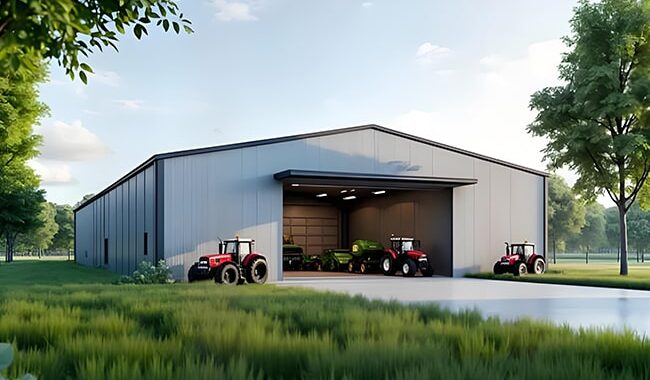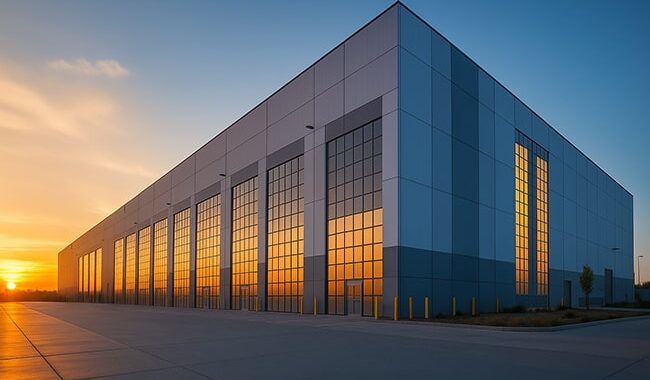In contemporary agriculture, the need for efficient, long-lasting, and cost-effective storage infrastructure is more crucial than ever. The modern farm…
The environment quickly corrodes steel structures during use, affecting the structure’s service life and safety performance. Therefore, steel structure anti-corrosion is a critical task.
Steel structure anti-corrosion prevents the steel structure from corroding during use, affecting its service life and safety.
Steel structure anti-corrosion is very important. If you want to improve the anti-corrosion of steel, you must first understand the corrosive environment to which the steel structure may be exposed.
Steel structure anti-corrosion – classification of corrosive environments
Atmospheric environment corrosion.
Water environment corrosion.
Soil environment corrosion.
Atmospheric corrosion
Atmospheric corrosion is a process that occurs within a wet film on the surface of a steel structure. Due to oxygen inside the damp film, a galvanic cell is formed, and chemical corrosion occurs.
Changes in the atmospheric environment will lead to changes in the corrosion rate. For example, the following factors will directly lead to an increase in the corrosion rate:
- Increase in relative humidity;
- Condensation occurs when the surface temperature of the steel structure is equal to or lower than the dew point;
- The total amount of atmospheric pollutants is increasing, such as sulfur dioxide and nitrogen dioxide;
Experiments show that severe corrosion will occur when the steel structure is in an environment with a relative humidity greater than 80% and a temperature higher than 0°C. If the environment has high contaminants or salts, severe corrosion can occur even with low moisture levels.
Water environment corrosion
The types of water environment can be divided into fresh water and salt water. Saltwater has a severe impact on the corrosion of steel structures. The presence of acid and alkaline ions in salt water will chemically react with the essential elements of the steel, leading to corrosion.
According to the location of the steel structure in the water, it can be divided into the following three types of areas:
- Underwater area: permanently submerged in water;
- Middle area: The water level will change in this area. This is an area where corrosion is aggravated by changes in water levels caused by natural or man-made factors, and the steel structure is subject to the intermittent combined action of water and atmosphere;
- Splash area: The area where the steel structure is splashed and wet by the water mist generated by the waves, especially in the waves, will cause severe corrosion.
Soil erosion
Soil corrosiveness is related to its mineral content and physical properties, organic matter content, water content, and oxygen content. Aeration conditions significantly affect soil corrosiveness. Minerals, water, oxygen, and other substances in the soil form galvanic cells, causing chemical corrosion of steel structures.
According to the three types of corrosive environments mentioned above, the environment can be divided into the following three categories: atmospheric environment classification, water environment classification, and soil environment classification. Among them, water and soil corrosion can be divided uniformly.
Atmospheric corrosive environment classification
The atmospheric environment can be divided into six categories of atmospheric corrosion levels.
C1 Very low corrosivity
C2 low corrosiveness
C3 moderately corrosive
C4 Highly corrosive
C5 Very corrosive
CX Extremely corrosive
| Level | External environment | Internal environment |
| C1 | / | Inside heated buildings with clean air, such as offices, shops, schools, hotels, etc. |
| C2 | The atmosphere with low pollution levels is mostly found in rural areas. | Condensation will likely occur in unheated buildings (e.g., warehouses, gymnasiums, etc.). |
| C3 | Urban and industrial atmospheres, moderate sulfur dioxide pollution, and low-salinity coastal areas. | In production plants with high humidity and some air pollution, such as food processing plants, laundry facilities, wineries, dairy factories, etc. |
| C4 | Industrial and coastal areas with moderate salinity. | Chemical plants, swimming pools, coastal vessels and shipyards, etc. |
| C5 | Industrial areas have high humidity and harsh atmospheres, and coastal regions have high salinity. | Buildings and areas where condensation and high contamination levels occur and exist continuously. |
| CX | Offshore areas with high salinity and tropical and subtropical industrial regions with extremely high humidity and aggressive atmospheres. | Industrial areas with extremely high humidity and corrosive atmosphere. |
Classification of corrosive environments for water and soil
Water and soil environments can be divided into the following four categories:
Im1 fresh water
Im2 sea water or brackish water
Im3 soil
Im4 sea water or brackish water
| Classification | Environment | The case for environment and structure |
| Im1 | Freshwater | Facilities installed on rivers, hydroelectric power stations |
| Im2 | Sea or brackish water | Immersed structures without cathodic protection (e.g. port areas such as gates, sluices or breakers) |
| Im3 | Soil | Underground storage tanks, steel piles and steel pipes |
| Im4 | Sea or brackish water | Immersed structures with cathodic protection (e.g., offshore structures) |
In addition to the above corrosive environments, there are some particular ones.
Special location
Internal corrosion of buildings:
Steel structures inside buildings not in contact with the outside environment usually experience mild corrosion stresses.
Suppose only part of the interior of the building is not in contact with the outside environment. In that case, the corrosion stress can be assumed to be the same as the atmospheric environment surrounding the building.
Corrosion in box-like components and hollow parts:
It is unrealistic for a hollow element to be completely sealed without suffering any internal corrosion. However, the internal corrosion stress of a hollow component tightly sealed and only occasionally opened is very small.
Closed hollow parts and box-like components shall be designed to ensure their tightness. For example, there are no discontinuous welds or tight bolted connections.
Special corrosion stress
Particular corrosion stress can aggravate corrosion and place higher requirements on the performance of protective coating systems. This type of corrosion stress is diverse and generally includes the following types:
Chemical stress
Corrosion is locally aggravated by pollutants (such as acids, alkalis, salts, organic solvents, corrosive gases, and fine dust) generated by factory operations.
This type of corrosion stress exists near coking projects, pickling workshops, electroplating plants, weaving and dyeing plants, wood pulp plants, tanneries, and oil refineries.
Mechanical stress.
Steel structures will withstand different mechanical stresses in various environments.
1. In the atmosphere
Wind-borne particles (such as sand) rubbing against the surface of a steel structure can cause wear stress (abrasion).
Surfaces subject to abrasion are considered exposed to moderate or severe mechanical corrosion stress.
2. In water
In water, mechanical corrosion stress may occur due to stone movement, sand friction, wave erosion, etc. Can be divided into three categories:
Weak:
There is no or very slight intermittent mechanical corrosion stress, such as light debris or the slow movement of water with small amounts of sand entrained.
Medium:
Moderate amounts of solid debris, sand, gravel, pebbles, ice, etc., are entrained by medium-speed flowing water;
There is no strong water flow carrying impurities scouring vertical surfaces;
moderate wave action;
Serious:
The erosion of vertical or inclined surfaces by fast-flowing water carrying a large amount of solid debris, sand, gravel, pebbles, ice, etc.;
Dense growth (of animals or plants), especially if it is subject to occasional mechanical movement for operational reasons;
Corrosion stress due to condensation
Suppose the surface temperature of a steel structure remains at or below the dew point for several days. In that case, the resulting condensation will lead to remarkably high corrosion stress, especially if this condensation is likely to recur at regular intervals, such as in water plants, water supply installations, and cooling water pipelines.
Medium and high temperatures cause corrosion stress.
The medium temperature is 60℃-150℃, and the high temperature is 150℃-400℃. Such high temperatures can only occur under special conditions in the operation of steel structures. For example, medium temperatures occur in ro
Why need steel structure anti-corrosion treatment?
- The corrosion of steel in the atmosphere is the result of both electrochemical corrosion and chemical corrosion.
- To exert the anti-corrosion effect of the coating, the paint film and the steel surface must be closely attached. If rust, grease, dirt, and other foreign matter between the substrate and the paint film, it will reduce the anti-rust effect and accelerate corrosion. Therefore, it is essential to carry out surface treatment of steel, anti-corrosion C-shaped steel, and control the roughness of the steel surface before coating.
- According to the principle of interaction between steel and environmental media, corrosion can be divided into chemical and electrochemical corrosion.
- Chemical corrosion refers to the chemical reaction of steel directly with oxygen gas, carbonic acid gas, acid gas, etc., in the atmosphere or industrial waste gas to cause corrosion.
- Steel corrosion causes economic losses and directly affects structures’ safety. Therefore, it is of great economic and social significance to do an excellent job in the anti-corrosion work of steel structure projects.
- Coating methods are mainly used at home and abroad to reduce or prevent the corrosion of steel structures. Coating protection involves using paint to isolate the steel structure from the environment to achieve the purpose of anti-corrosion and prolong the use of steel structures. Life is over.
- Corrosion (rust) is damage caused by the interaction between the steel surface and the external medium. It reduces the steel’s effective surface, bearing capacity, and durability.
Steel structure anti-corrosion treatment method:
1. Hot-dip galvanizing
The hot-dip galvanizing anti-corrosion method is mainly used in outdoor steel materials that are heavily affected by moisture. First, the steel structure components are immersed in a molten metal tank and then coated to form a protective layer on the surface of the steel materials, which has an anti-corrosion effect.
The process of hot-dip galvanizing includes the following steps:
Pretreatment: Surface treatment of steel components, including degreasing, derusting, cleaning, etc. This step is the most critical in the hot-dip galvanizing process, and the quality of surface treatment directly affects the quality of the zinc layer.
Pickling: Soak the pretreated steel components in an acidic cleaning solution to remove residual oxides and other impurities on the steel surface.
Soaking: immerse the pickled steel member in the zinc-containing molten liquid so that the surface is coated with a layer of zinc with uniform thickness. The time and temperature of this step should be well controlled to ensure the quality of the zinc layer.
Cooling: Take out the galvanized steel components, and after cooling, they can be further processed, such as painting, etc.
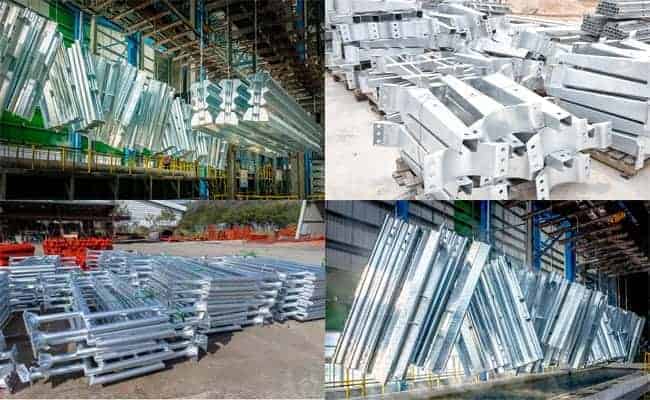
2. Anti-corrosion painting
The anti-corrosion painting method mainly treats indoor steel materials. It especially forms a protective film by coating special anti-corrosion paint on the surface of steel structures to prevent chemical reactions between steel materials and the external environment and avoid steel corrosion.
The following are the specific steps of the painting:
Surface treatment: First of all, the surface of the steel structure needs to be treated to remove surface dirt, rust, an oxide layer, and other substances to ensure that the surface of the steel structure is smooth, flat, and clean. Surface treatment methods include sandblasting, mechanical cleaning, chemical cleaning, etc.
Primer treatment: After surface treatment, a layer of primer must be applied first to increase the adhesion and durability of the anti-corrosion coating and, simultaneously, provide a certain amount of anti-corrosion protection.
Intermediate coating: After the primer treatment, one or more intermediate layers must be applied to improve the steel structure’s corrosion and weather resistance.
Topcoat treatment: After the intermediate coating is finished, it is necessary to apply a topcoat to increase the gloss and aesthetics of the anti-corrosion coating and, at the same time, provide better anti-corrosion protection.
Inspection: After the coating is completed, the layer needs to be inspected to ensure the thickness and uniformity of the anti-corrosion coating. At the same time, it is also necessary to check whether the performance indicators, such as adhesion, hardness, and chemical resistance of the layer, meet the requirements.
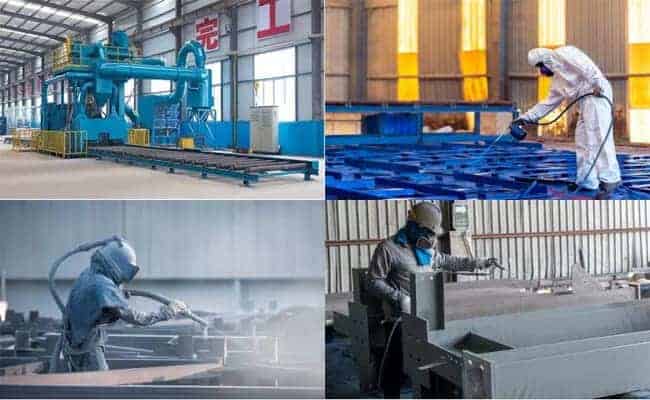
What are the coatings for steel structure anti-corrosion?
Fluorocarbon topcoat
Fluorocarbon topcoat is a high-performance coating commonly used for surface coating of steel structures. Its main component is fluorocarbon resin, which has the characteristics of weather resistance, chemical corrosion resistance, ultraviolet radiation resistance, and pollution resistance.
The advantages of fluorocarbon topcoats for steel structure anti-corrosion :
Good weather resistance: Fluorocarbon topcoat has excellent weather resistance and can resist the natural environment’s erosion of ultraviolet rays, wind, and rain.
Chemical corrosion resistance: Fluorocarbon topcoat can resist the corrosion of chemical substances such as acid and alkali, making the steel structure stable for a long time.
Good anti-pollution: Fluorocarbon topcoat has a smooth surface, is not easy to attach to dirt, and is easy to clean, making the appearance of the steel structure clean and beautiful.
Good wear resistance: The fluorocarbon topcoat film has high hardness and is not readily subject to abrasion, protecting the surface of the steel structure from damage.
Pleasing aesthetics: Fluorocarbon topcoat has good color stability and gloss, which can make the steel structure look beautiful.
Epoxy zinc-rich paint
Epoxy zinc-rich paint is a steel structure anti-corrosion coating composed of epoxy resin, chlorinated polyethylene, zinc-rich powder, and other materials. Its main feature is to add zinc-rich powder based on epoxy resin, which has high anti-corrosion performance and adhesion and can protect the steel structure from the erosion of the external environment.
The advantages of Epoxy zinc-rich paint for steel structure anti-corrosion :
Epoxy zinc-rich paint is suitable for corrosion protection of steel structures in marine, chemical, petroleum, and other corrosive environments. Its advantages mainly include the following aspects:
Good anti-corrosion performance: Zinc-rich powder is added to epoxy zinc-rich paint, effectively preventing corrosion and oxidation of steel structures, making it have good corrosion resistance.
Strong adhesion: Epoxy zinc-rich paint has good adhesion, can firmly adhere to the surface of the steel structure, and is not easy to peel off.
Good water resistance: Epoxy zinc-rich paint has good water resistance and can be used in water for a long time.
Good weather resistance: Epoxy zinc-rich paint has good weather resistance and can be used for a long time under different climatic conditions.
Polyurethane paint
Polyurethane paint is a high-performance coating with excellent corrosion and weather resistance. Since the steel structure must often be exposed to harsh environments, such as the ocean, high temperature, low temperature, acid rain, etc., using polyurethane paint to protect the steel structure can significantly extend its service life.
Polyurethane paint has good adhesion properties and can be firmly attached to the surface of the steel structure to form a solid protective layer. In addition, polyurethane paint also has good wear and chemical resistance, which can effectively prevent steel structures from being subjected to mechanical wear and chemical corrosion.
When using polyurethane paint to coat steel structures, it is necessary to pay attention to the thickness of the paint film and the uniformity of the coating to ensure a protective effect. In addition, it is essential to choose the type of polyurethane paint suitable for anti-corrosion, such as high-temperature-resistant polyurethane paint used in high-temperature environments or seawater corrosion-resistant polyurethane paint used in marine environments.








